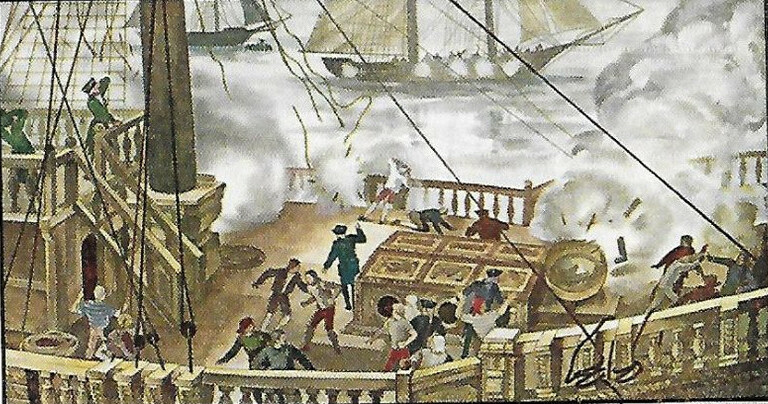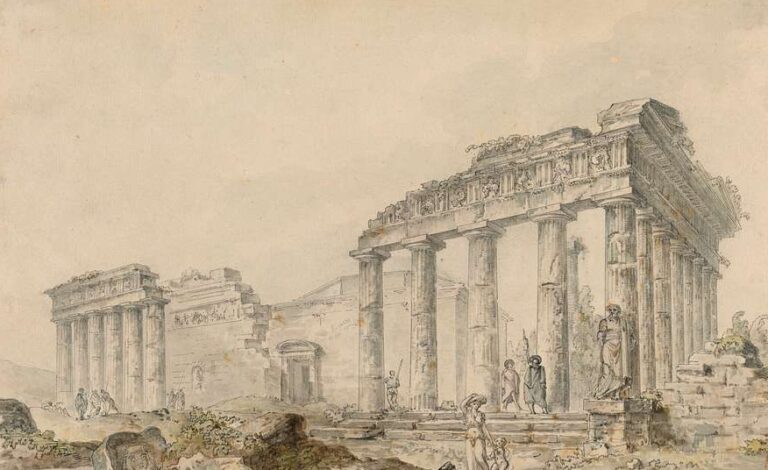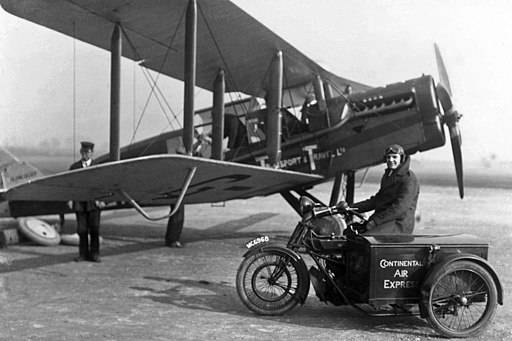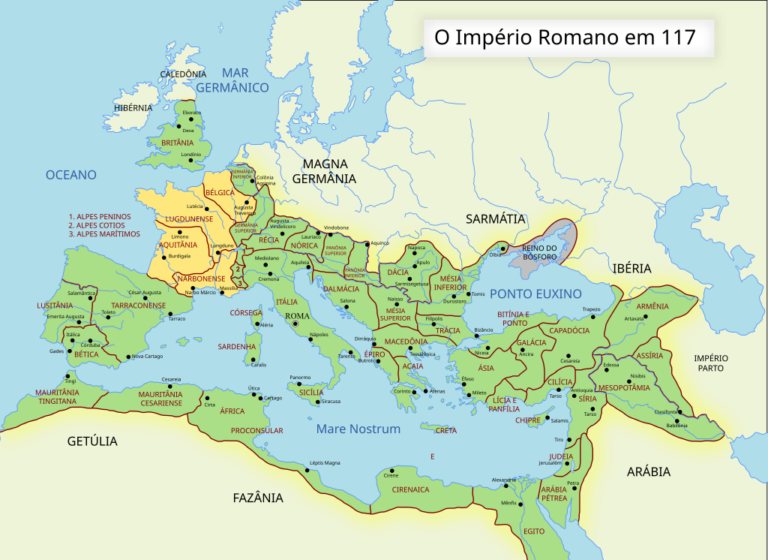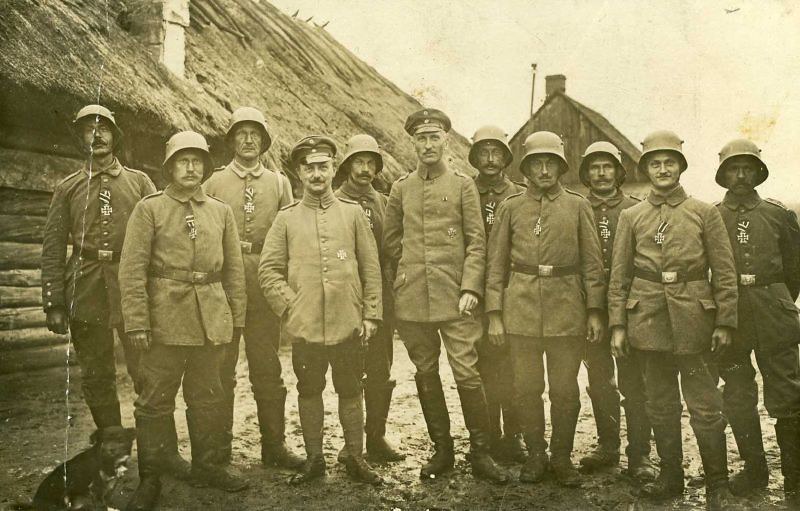
Europe’s history has been marred by conflicts of immense scale and devastation. From ancient battles to modern wars, millions have perished due to war, famine, disease, and genocide. Below is an account of some of the bloodiest wars in Europe, ranked by estimated death tolls.
1. World War II (1939–1945)
Death Toll: ~70–85 million worldwide, ~40 million in Europe
World War II is the deadliest conflict in human history, reshaping the political and social landscape of the 20th century. While the war spanned multiple continents, Europe bore the brunt of its devastation. Massive military campaigns ravaged cities, while relentless bombing raids destroyed infrastructure and killed millions of civilians.
One of the most horrifying aspects of the war was the Holocaust, in which Nazi Germany systematically murdered six million Jews, along with millions of others, including Poles, Romani people, Soviet prisoners of war, and political dissidents. The Eastern Front, where Nazi Germany clashed with the Soviet Union, was particularly brutal, accounting for some of the highest casualties in the war..
2. World War I (1914–1918)
Death Toll: ~16–20 million worldwide, ~10 million in Europe
Known as “The Great War,” World War I was one of the deadliest conflicts in human history, marked by unprecedented levels of destruction and suffering. The war began with the assassination of Archduke Franz Ferdinand of Austria and quickly escalated into a global conflict involving major European powers, along with their colonial forces.
The war introduced trench warfare on a massive scale, particularly on the Western Front, where soldiers endured brutal conditions, including disease, artillery barrages, and poison gas attacks. Battles such as the Somme, Verdun, and Passchendaele became synonymous with staggering casualty rates, as new industrialized weaponry—machine guns, tanks, and chemical weapons—made traditional military tactics obsolete.
Beyond the battlefield, civilians suffered immensely from famine, bombings, and forced displacements. The war also saw the Armenian Genocide, in which the Ottoman Empire carried out mass killings and deportations of Armenians..
3. The Reconquista (718–1492)
Death Toll: ~7–10 million (estimated over centuries)
The Reconquista was a nearly 800-year-long series of conflicts in the Iberian Peninsula, during which Christian kingdoms sought to reclaim territories controlled by Muslim rulers of Al-Andalus. This prolonged struggle profoundly shaped the religious, cultural, and political landscape of modern Spain and Portugal.
It began in 718 with the Battle of Covadonga, a small but symbolic Christian victory in the northern mountains of Asturias. Over the centuries, Christian forces, including the kingdoms of Castile, Aragon, León, and Portugal, launched numerous campaigns against the Muslim-controlled territories. The conflict saw both periods of coexistence and intense warfare, with shifting alliances between Christian and Muslim factions.
Key events included the decisive Battle of Las Navas de Tolosa (1212), which marked the decline of Muslim power in Iberia, and the gradual fragmentation of Al-Andalus into smaller taifas (city-states). The final chapter came in 1492, when the Catholic Monarchs Ferdinand II of Aragon and Isabella I of Castile conquered Granada, the last Muslim stronghold.
4. The Russian Civil War (1917–1923)
Death Toll: ~5–9 million (including related famines)
Following the Russian Revolution of 1917, the Russian Civil War erupted between the Bolsheviks (Reds), who sought to establish a communist state, and their diverse opponents, the Whites, a coalition of monarchists, liberals, and moderate socialists. The war engulfed much of Eastern Europe and Russia, plunging the former Russian Empire into chaos and destruction.
The conflict was marked by brutal urban battles, mass executions, and shifting frontlines, as various factions, including regional independence movements and foreign interventions (such as Britain, France, the United States, and Japan), became involved. The war also saw extreme violence against civilians, particularly through the Red Terror (executions and repression by the Bolsheviks) and the White Terror (reprisals by anti-Bolshevik forces).
Beyond combat, famine and disease devastated the population, particularly in regions affected by warlordism and economic collapse. The 1921–1922 Russian famine, worsened by war policies and a harsh drought, led to millions of deaths. By 1922, the Bolsheviks had secured victory, leading to the formation of the Soviet Union (USSR).
5. Thirty Years’ War (1618–1648)
Death Toll: ~4–8 million
Fought primarily within the Holy Roman Empire, the Thirty Years’ War began as a religious conflict between Catholics and Protestants but quickly escalated into a broader political struggle involving most of Europe’s major powers. What started as a local rebellion against Habsburg rule in Bohemia soon drew in Austria, Spain, France, Sweden, Denmark, and numerous German principalities, turning Central Europe into a battleground.
The war was marked by large-scale battles, scorched-earth tactics, and brutal sieges, but famine and disease were the greatest killers. Civilians bore the brunt of the devastation, as mercenary armies plundered villages and towns to sustain themselves. Some regions, such as parts of Germany, Bohemia, and the Netherlands, saw their populations reduced by 30% to 50% due to starvation, disease, and massacres. The infamous Sack of Magdeburg (1631) exemplified the war’s brutality, with over 20,000 civilians slaughtered in a single attack..
6. The Deluge Wars (1655–1660)
Death Toll: ~4–5 million
The Deluge Wars, also known as the Swedish Deluge, were a series of devastating conflicts fought primarily in Poland-Lithuania and surrounding regions during the mid-17th century. These wars were part of the broader struggle for dominance in Eastern and Central Europe, involving the Swedish Empire, the Tsardom of Russia, Brandenburg-Prussia, the Crimean Khanate, and the Habsburg Monarchy.
The conflict began in 1655, when Sweden, under King Charles X Gustav, launched an invasion of the Polish-Lithuanian Commonwealth, quickly capturing large territories, including Warsaw and Kraków. The rapid conquest led to mass devastation, as Swedish forces plundered towns and villages. Meanwhile, Russia took advantage of Poland’s weakened state, launching its own invasion of Lithuania. Other regional powers, such as Brandenburg-Prussia and the Crimean Tatars, also became involved, further complicating the war.
The war was marked by immense civilian suffering. Cities were looted, farmland was destroyed, and mass killings occurred across the region. The combined impact of military campaigns, famine, disease, and massacres resulted in the deaths of nearly one-third of the Polish population. The war ended in 1660 with the Treaty of Oliva, restoring Polish control over most of its lands but significantly weakening the Commonwealth
6. Napoleonic Wars (1803–1815)
Death Toll: ~3.5–5 million
The Napoleonic Wars were a series of massive conflicts fought between Napoleon Bonaparte’s France and various coalitions of European powers, including Britain, Austria, Russia, Prussia, and Spain. These wars reshaped Europe politically and militarily, leading to the rise and fall of the French Empire and drastically altering national borders.
The wars saw some of the largest and most intense battles in history, such as Austerlitz (1805), Jena-Auerstedt (1806), and Borodino (1812). Napoleon’s military genius allowed France to dominate much of the continent for over a decade, but his campaigns were marked by high casualties, relentless guerrilla warfare (especially in Spain and Portugal), and devastating forced marches.
One of the most catastrophic events of the wars was Napoleon’s invasion of Russia in 1812. Initially commanding over 600,000 troops, the Grande Armée advanced deep into Russia, capturing Moscow. However, the scorched-earth tactics of the Russian army, combined with extreme cold, starvation, and relentless counterattacks, led to a disastrous retreat. By the time Napoleon’s forces withdrew, fewer than 100,000 soldiers remained.
7. The French Wars of Religion (1562–1598)
Death Toll: ~2–4 million
The French Wars of Religion were a series of brutal conflicts between Catholics and Huguenots (French Protestants) that devastated France during the late 16th century. These wars were among the bloodiest religious conflicts in European history, fueled by political rivalries, religious intolerance, and dynastic struggles for control over the French throne.
The conflict began in 1562, when hostilities erupted between the Protestant and Catholic factions following the Massacre of Vassy, where dozens of Huguenots were killed by Catholic forces. Over the next three decades, France was engulfed in civil war, massacres, assassinations, and shifting alliances, with neighboring powers such as Spain, England, and the Dutch Republic intervening at different times.
One of the most infamous events of the wars was the St. Bartholomew’s Day Massacre (1572), in which thousands of Huguenots were slaughtered in Paris and other French cities in a wave of anti-Protestant violence..
8. The Hundred Years’ War (1337–1453)
Death Toll: ~2–3 million
The Hundred Years’ War was a prolonged and complex series of conflicts between the Kingdom of England and the Kingdom of France, primarily fought over claims to the French throne and territorial disputes. Despite its name, the war lasted 116 years, with intermittent periods of truce and smaller conflicts shaping its course.
The war can be divided into several key phases, including the early English victories under Edward III and the Black Prince, the French resurgence under Charles V, the devastating English campaigns led by Henry V (notably the Battle of Agincourt in 1415), and finally, the decisive French counteroffensive, bolstered by Joan of Arc’s leadership.
The conflict was not only fought on the battlefield but also caused widespread economic devastation, peasant uprisings (such as the Jacquerie in France and the Peasants’ Revolt in England), and outbreaks of the Black Death, which further decimated populations..
9. Mongol Invasions of Europe (13th Century)
Death Toll: ~2–3 million
The Mongol invasions of Eastern Europe, led by Genghis Khan’s successors, were among the most devastating military campaigns in medieval history. The Mongols, under Batu Khan, the grandson of Genghis Khan, launched a brutal westward expansion, targeting Kievan Rus, Poland, Hungary, and the Balkans. Their superior cavalry, tactical brilliance, and psychological warfare allowed them to overwhelm European forces with shocking speed and efficiency.
The Mongols began their assault in 1236, first devastating the Volga Bulgars before launching a full-scale invasion of Kievan Rus (1237–1240). Major cities, including Kiev, Ryazan, and Vladimir, were completely destroyed, with Kiev’s population reduced from 50,000 to a few thousand survivors. The Mongols used siege warfare, deception, and terror tactics, often massacring entire populations to instill fear in future targets.
In 1241, the Mongols advanced into Central Europe, inflicting crushing defeats on Poland and Hungary at the Battle of Legnica and the Battle of Mohi. Their forces burned towns, slaughtered civilians, and caused widespread panic across the region. However, in 1242, following the death of the Great Khan Ögedei, the Mongols withdrew to resolve succession disputes, sparing Western Europe from further destruction.
10. The French Revolutionary Wars (1792–1815)
Death Toll: ~1.4–2 million
The French Revolutionary Wars were a series of large-scale conflicts that erupted as revolutionary France faced off against multiple European coalitions determined to suppress the spread of radical republicanism. These wars were directly sparked by the overthrow of the French monarchy and the establishment of the French Republic, which alarmed the monarchies of Europe and led to military interventions aimed at restoring the old order.
The war began in 1792, when France, already in political turmoil, declared war on Austria and Prussia. Early on, the French army struggled against well-trained European forces, but the tide turned with the Battle of Valmy, where French troops repelled a Prussian invasion, securing the survival of the fledgling republic. This victory emboldened revolutionary leaders, leading to the execution of King Louis XVI in 1793 and intensifying hostilities with Britain, Spain, and the Netherlands.
The wars expanded beyond France’s borders as revolutionary armies advanced into Italy, the Low Countries, and the Rhineland, dismantling feudal structures and spreading revolutionary ideals. French generals like Napoleon Bonaparte rose to prominence, securing major victories in Italy and launching the ambitious but ultimately disastrous Egyptian campaign against British interests in the Middle East. Meanwhile, European monarchies formed a Second Coalition in 1798, hoping to finally crush revolutionary France.
The wars ultimately ended with the Treaty of Amiens in 1802, bringing a temporary halt to hostilities. However, the peace was fragile, as Napoleon Bonaparte, having seized power in a coup d’état in 1799, continued to expand French influence across Europe. Within a year, the continent would once again descend into conflict, leading directly into the Napoleonic Wars (1803–1815).
11. The Franco-Prussian War (1870–1871)
Death Toll: ~1.15 million
The Franco-Prussian War was a pivotal conflict between France and the German states, led by Prussia, that resulted in the unification of Germany and the collapse of Napoleon III’s Second French Empire. Fueled by long-standing tensions between France and Prussia, as well as Otto von Bismarck’s ambitions for German unity, the war reshaped the balance of power in Europe and marked the rise of Germany as a dominant force.
The war began in July 1870, following the Ems Dispatch, a diplomatic maneuver orchestrated by Bismarck that inflamed French public opinion and provoked Emperor Napoleon III into declaring war on Prussia. Confident in their military strength, the French mobilized quickly but were outmatched by Prussia’s superior organization, modern weaponry, and coalition of German allies.
Within weeks, Prussian forces, using their efficient railway system and well-coordinated strategy, won decisive victories at battles such as Gravelotte and Mars-la-Tour. The turning point came in September 1870, when the French army suffered a crushing defeat at the Battle of Sedan, leading to the capture of Napoleon III and the fall of the Second French Empire. The war did not end there, however, as a new French Republic continued to resist. Prussian forces laid siege to Paris, and after months of bombardment and starvation, the French capital surrendered in January 1871.
12. The Balkan Wars (1912–1913)
Death Toll: ~700,000–1,5 million
Though smaller in scale than the world wars, the Balkan Wars played a crucial role in destabilizing Southeast Europe and setting the stage for World War I. These conflicts were fought between the Balkan League (Serbia, Montenegro, Greece, and Bulgaria) and the Ottoman Empire, as well as between the former allies themselves, in a struggle for territorial dominance in the Balkans. The wars were marked by brutal battles, shifting alliances, and severe humanitarian crises, leading to widespread suffering and death.
The First Balkan War (1912–1913) began when the Balkan League launched an attack on the Ottoman Empire to seize remaining territories in Macedonia and Thrace. The Ottomans, weakened after years of decline, suffered major defeats, and by the war’s end, they had lost almost all of their European possessions. The Treaty of London (1913) redrew the map of the Balkans, but disputes over the division of territory soon led to further conflict.
The Second Balkan War (1913) erupted when Bulgaria, dissatisfied with its territorial gains, attacked Serbia and Greece. However, Bulgaria was quickly overwhelmed as Romania and the Ottoman Empire joined the fight against it. The war ended with Bulgaria suffering significant territorial losses, further deepening regional tensions.
13. The Gallic Wars (58 BC–50 BC)
Death Toll: ~700,000–1.47 million
The Gallic Wars, led by Julius Caesar, were a series of brutal military campaigns waged by the Roman Republic against the Gallic tribes of modern-day France, Belgium, and parts of Germany. These wars were not only a testament to Roman military supremacy but also a key moment in Caesar’s rise to power. The campaigns resulted in the mass slaughter, enslavement, and subjugation of the Gauls, reshaping the region and integrating Gaul into the Roman world.
Caesar initiated the war in 58 BC, citing the migration of the Helvetii as a threat to Roman interests. His legions swiftly defeated them and went on to crush the Germanic leader Ariovistus, eliminating competition for dominance in Gaul. Over the next several years, Caesar systematically conquered Gallic tribes, using a combination of ruthless warfare, strategic alliances, and political manipulation to subdue opposition.
The bloodiest phase of the war came in 52 BC, when the Gallic tribes, led by Vercingetorix, mounted a last, desperate resistance. The conflict culminated in the Siege of Alesia, where Caesar’s forces encircled and starved out the Gallic stronghold.
14. The Spanish Civil War (1936–1939)
Death Toll: ~500,000–1 million
The Spanish Civil War was a brutal and deeply divisive conflict between the leftist Republicans and the right-wing Nationalists, led by General Francisco Franco. Emerging from a fractured political climate in Spain, the war became a proxy battle between competing ideologies—fascism, communism, and democracy—foreshadowing the larger conflict of World War II.
Tensions had been brewing in Spain for years, with political instability, economic struggles, and social unrest pitting Republicans (supporting a democratic government, socialism, and workers’ rights) against Nationalists (favoring military rule, Catholic conservatism, and authoritarianism). The war began in July 1936, when Franco and other military leaders launched a coup d’état against the Spanish Republic. While they expected a quick victory, resistance from Republican forces turned the uprising into a full-scale civil war.
Both sides received international support. The Nationalists were aided by Nazi Germany and Fascist Italy, who supplied troops, aircraft, and weapons, seeing the conflict as a way to test military tactics. One of the most infamous events of the war was the bombing of Guernica (1937) by Germany’s Condor Legion, an aerial assault that destroyed the Basque town and inspired Pablo Picasso’s famous painting, Guernica. Meanwhile, the Republicans received aid from the Soviet Union and international volunteer brigades, though internal divisions weakened their effectiveness.
By 1939, Franco’s forces had gained the upper hand, capturing Madrid and sealing Nationalist victory. Franco established a dictatorship that would rule Spain for nearly four decades.
15. The Seven Years’ War (1756–1763)
Death Toll: ~850,000–1.4 million (global), ~500,000–900,000 in Europe
Often referred to as the first “world war” due to its global scale, the Seven Years’ War involved most of the great powers of the time, with major theaters of conflict across Europe, North America, the Caribbean, West Africa, and India. In Europe, the war saw massive casualties from battles fought between the Prussian Kingdom, supported by Britain and smaller allies, against France, Austria, and Russia.
The war’s origins lay in the longstanding rivalries between European powers, particularly the competition for colonial dominance and territorial disputes. Frederick the Great of Prussia, who had seized Silesia from Austria in the War of Austrian Succession, was at the center of the conflict. The Austrians, alongside Russia and France, sought to reverse this gain and weaken Prussia, while Britain sought to protect its own global empire and weaken its rivals.
16. The Second Punic War (218 BC–201 BC)
Death Toll: ~770,000
The Second Punic War was one of the most famous and brutal conflicts of the ancient world, fought between the Roman Republic and the Carthaginian Empire. It is most renowned for the military genius of Hannibal Barca, the Carthaginian general who led his forces across the Alps into Italy and inflicted devastating defeats on the Romans. The war is also remembered for one of history’s deadliest battles, the Battle of Cannae, and for the intense struggle for dominance in the Mediterranean.
The war began in 218 BC after Hannibal launched an attack on the Roman-allied city of Sagamum in Spain, a strategic move to expand Carthage’s territory and weaken Rome’s influence. One of the most significant battles of the war was the Battle of Cannae in 216 BC, where Hannibal delivered a catastrophic defeat to the Roman army. With approximately 80,000 Roman soldiers encircling a Carthaginian force of 40,000 to 50,000, Hannibal used brilliant tactics to trap and annihilate the Roman legions. The result was one of the largest loss of life in a single battle in the ancient world, with nearly 70,000 Romans killed and the destruction of a significant portion of Rome’s army.
17. The War of Austrian Succession (1740–1748)
Death Toll: ~750,000
The War of Austrian Succession was a significant European conflict that arose primarily over the question of Maria Theresa’s right to inherit the throne of the Austrian Habsburg Empire after the death of her father, Emperor Charles VI, in 1740. Charles VI had issued the Pragmatic Sanction to ensure his daughter’s succession, but not all of Europe’s great powers recognized her claim. The war quickly escalated, drawing in multiple powers, including Prussia, France, Spain, and Britain, each with their own interests in the balance of European power.
Maria Theresa, a capable and determined ruler, faced immediate challenges to her authority from Frederick II of Prussia, who seized the Austrian province of Silesia, believing it was rightfully part of Prussia. This initial conflict between Prussia and Austria triggered a broader war, as alliances shifted. France allied with Prussia to weaken Austria, while Britain and the Dutch Republic sided with Austria, hoping to curb French influence and protect European stability.
The Treaty of Aix-la-Chapelle in 1748 ended the war without completely resolving the underlying issues. Prussia retained control of Silesia, a significant loss for Maria Theresa, but she was able to preserve her throne and gain recognition as the legitimate ruler of Austria.
18. The Crimean War (1853–1856)
Death Toll: ~500,000–750,000
The Crimean War was a major conflict fought between Russia and an alliance of the Ottoman Empire, Britain, France, and Sardinia. The war is often seen as a struggle for power and influence in southeastern Europe, especially regarding the control of the Black Sea region and the decline of the Ottoman Empire. It was also a precursor to the broader geopolitical conflicts that would define Europe in the coming decades.
The war’s immediate origins lay in Russian expansionism and its desire to protect and expand its influence over the weakened Ottoman Empire. The Russians sought to gain control over Ottoman territories in the Balkans and establish greater dominance in the Black Sea region. Russia also sought to gain the right to protect Christian minorities in Ottoman-controlled regions, which served as a pretext for their invasion. This alarmed both Britain and France, who feared that an expansionist Russia would disrupt the European balance of power and threaten their own imperial interests.
The Crimean War was also marked by harsh conditions, including extreme cold, poor supply chains, and the lack of modern medical practices. Disease, particularly cholera and typhus, claimed more lives than combat itself, with many soldiers dying from preventable illnesses rather than battle wounds.
By 1856, the war ended with the Treaty of Paris, which saw Russia suffer significant territorial losses. Russia had to renounce claims over the Danube River, Moldavia, and Wallachia (which would later become part of Romania). It was also prohibited from having a military presence in the Black Sea, effectively neutralizing it as a naval power in the region.
19. The Nine Years’ War (1688–1697)
Death Toll: ~680,000
The Nine Years’ War, also known as the War of the Grand Alliance, was a major European conflict fought between France, led by King Louis XIV, and a coalition of European powers, including the Holy Roman Empire, Spain, England, the Dutch Republic, and others.
The primary cause of the war was the aggressive expansionist policies of Louis XIV, who sought to extend French territory and influence. Louis’s expansion into territories such as the Spanish Netherlands (modern-day Belgium) and his attempts to further consolidate his power in Europe alarmed other European monarchs. The coalition, known as the Grand Alliance, was formed to counterbalance the growing power of France and to prevent Louis from upsetting the European balance of power.
The Nine Years’ War had a devastating effect on Europe. Tens of thousands of soldiers died in battles and sieges, and civilian casualties were high due to the destruction of towns, villages, and infrastructure. Disease, famine, and the strain of prolonged warfare on European economies and populations contributed to the high death toll.
In 1697, the war concluded with the Treaty of Ryswick, which sought to restore the territorial status quo and prevent further French territorial expansion. The treaty allowed Louis XIV to retain control of some of his conquests, including parts of Flanders, but he had to give up other territories.
20. The Roman-Germanic Wars (113 BC–774 AD)
Death Toll: ~540,000
A prolonged series of wars between the Roman Republic (later the Roman Empire and Byzantine Empire) and various Germanic tribes, including the Cimbri, Teutons, Goths, and Vandals. These conflicts played a major role in the decline of the Western Roman Empire.
The wars began in 113 BC when the Cimbri and Teutons, two massive confederations of Germanic tribes, crossed the Rhine River into Roman territory, causing widespread panic in Rome. The two tribes had migrated from the northern reaches of Europe, driven by pressure from other migrating groups and environmental factors. Their invasion led to a series of devastating defeats for Rome in the early years of the conflict. In the Battle of Arausio in 105 BC, the Roman legions suffered one of their worst defeats in history, with an estimated 80,000 Roman soldiers killed.
The most significant and long-lasting phase of the Roman-Germanic wars occurred during the 3rd and 4th centuries AD, when the Goths, Vandals, and other Germanic tribes began to threaten the Roman Empire on a massive scale. The Goths in particular, split into two groups—the Visigoths and the Ostrogoths—launched a series of invasions against the Roman Empire. These invasions, along with pressures from other barbarian groups, severely weakened the empire. In the following decades, the Vandals, another Germanic tribe, invaded North Africa, seizing control of the Roman province of Carthage in 439 AD. Their conquest of North Africa severely disrupted Rome’s vital grain supply, further weakening its power. The Vandals also famously sacked Rome in 455 AD.
..
Related articles:
The Bloodiest Conflicts in the Americas
The Bloodiest Conflicts in Asia
List of Wars | Historical Conflicts from the Trojan War to Present | Britannica

